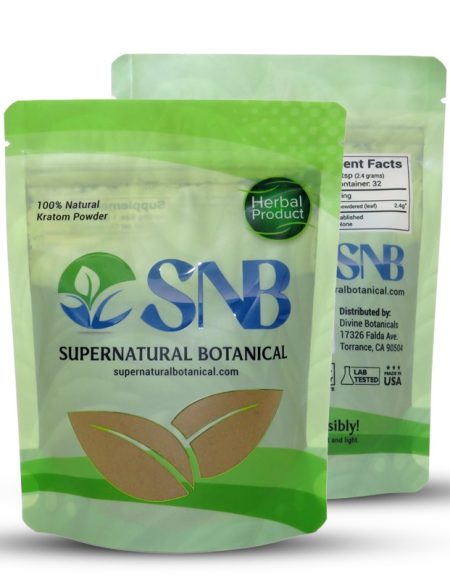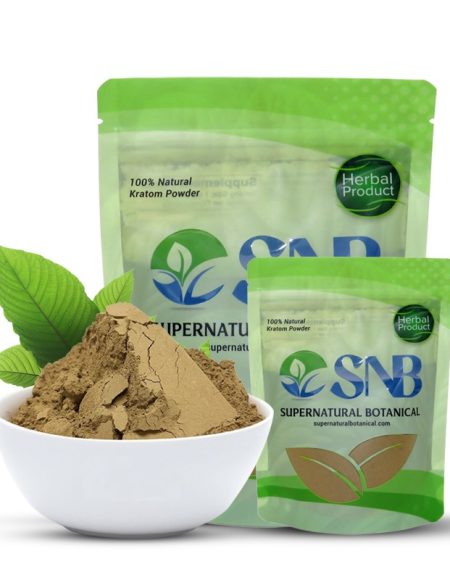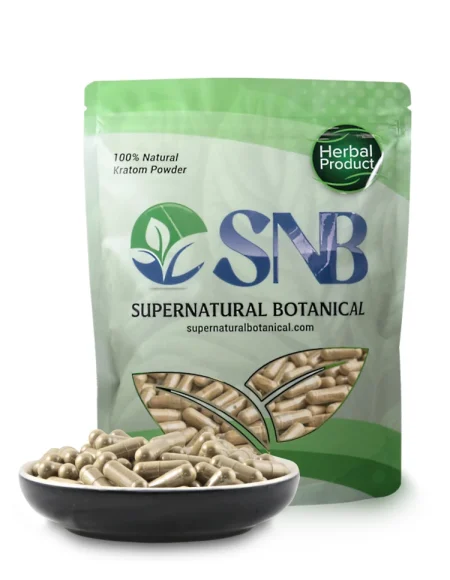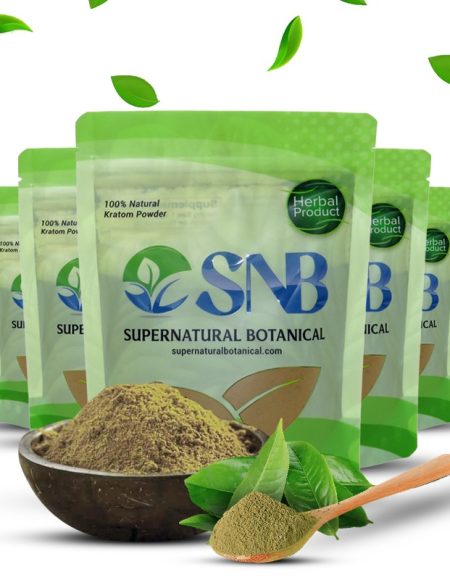Several people nowadays are dependent upon Kratom as their primary substance dosage. With an increasing demand for Kratom consumption, it is only natural that hobbyist gardeners want to turn their garden into a botanical wonder of the Speciosa plant.
As appealing as growing your Kratom trees at home sounds, it can be a real headache. This medicinal plant is easy to propagate and requires utmost dedication and supervision to grow healthy.
Table of Contents
However, if you are a nature enthusiast and someone who loves challenges, you will love this exciting Kratom growing ride. Before we hop onto our Mitragyna cultivating mission, there are many factors that you must be well aware of before putting in your efforts and resources into planting the tree.
The Optimum Environment Conditions Required For Your Plant
The first and foremost thing that you need to consider before sowing your Kratom seeds is the natural factors that affect your plant’s growth. Many important factors, such as the pH and the soil’s nutrient scale, light intensity, humidity, and temperature variations, need to be taken into account while planting just any tree or plant.
Without keeping these factors in mind, you are likely to give rise to a very poor yield of your plant species.
Let us follow an in-depth discussion about the necessary elements that need to be present for your Mitragyna plant to grow well.
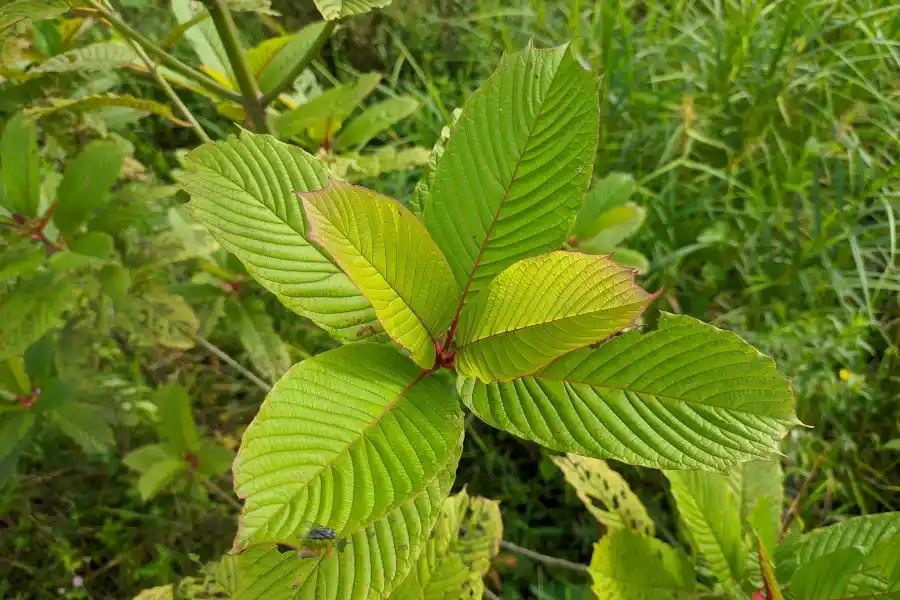

Your Planting Spot – The Soil
Growing your plants requires you to have in-depth knowledge about the soil types and the elements that need to be present in the soil for plant growth. Depending on different plant species, the soil’s pH and the nutrients present in it are accounted for optimum growth and yield.
In Kratom’s case, the soil needs to be laden with moisture and humus to allow for healthy growth.
Mitragyna Speciosa is native to the tropical regions, where the soil is naturally extremely fertile, an essential resource without which your plant cannot grow. The soil should be of a consistency that can drain well.
However, it should not drain so much that it flushes out all of the nutrients with it. Exceptionally fertile soil, rich in nitrogen and full of humus, with a pH of around 5.5 to 6.5, is ideally needed for your Kratom plants to flourish.
If your soil’s pH is even slightly acidic, the mitragyna plants will not thrive in that condition. Determine the soil’s pH scale with a pH measuring instrument like a pH meter and add dolomite lime or garden lime in specified amounts to balance the pH of your soil.
Light Intensity
Like any other plant, Kratom trees also needs adequate sunlight to photosynthesize properly and flourish. However, too much sunlight can cause excessive transpiration, resulting in loss of moisture from the plant.
As a result, your trees may start wilting. To prevent that, you should give your plant some shelter during immensely sunny days.
Moisture
As the herb is native to the tropical regions, it naturally grows in a moist and humid area. Hence, it is necessary to regularly check your soil for moisture and spray water over and around the plant to maintain a humid environment.
Keep the soil damp, but do not flood it and make it a swamp. Even though Kratom loves water, its excess is believed to promote fungus growth, which might even kill the plant.
Both insufficiency and surplus of water are dangerously harmful, or perhaps even fatal to the plant. Therefore, the water level must be kept in check at all times to avoid any such calamities.
Temperature
The ideal temperature for growing Kratom is around 70 degrees Fahrenheit to 90 degrees Fahrenheit. The plant does not do well when the temperature goes below 60 degrees Fahrenheit and eventually dies if exposed to prolonged temperatures below 50F.
This kind of extremely hot temperature range of 60 Fahrenheit or above is quite challenging to maintain outdoors, given that most parts of the US have considerably low temperatures, even in the daytime.
Therefore, if you are residing in regions where it is significantly cold, you will require a green-house or a grow tent with immense light intensity to give rise to temperatures for stressless gardening.
It should also be noted that, for the initial germination period, it is advised to keep the Kratom plant indoors to shield it from cold. This is another tough chore as you would have to shift your plants between indoors and outdoors as the temperature varies with seasons.
Seeds vs. Cuttings vs. Shoots – What Should You Choose?
After choosing your spot for growing Korth, next, you need to get yourself some fresh seeds, which are almost impossible to lay hands on in the US. The alternatives to Kratom seeds are cuttings and shoots.
Using cuttings or shoots, you free yourself from the hassle of going through the tiring and unlikely process of germination.
Are you wondering why Kroth seeds are difficult to get a hold of? Read below to find out.
Kratom Seeds
Growing Mitragyna from seeds has extremely low success rates. So even if you manage to get hold of the right soil, the perfect amount of water, adequate light, and the correct temperature, you may still never be able to see your tree! Sounds heartbreaking, doesn’t it?
Well, this is because the seeds lose their ability to germinate after just a few days of being harvested. Not to mention that Kratom’s germination rate is tremendously low, and there are much fewer chances of its seeds sprouting a leaf anyway. Therefore, you need to lay your hands on the freshest seeds you can get to ensure that they still retain their germination ability.
In addition to this, you would also need to sow many seeds to increase your chances of having your healthy speciosa tree, as at least one of them is bound to germinate.
Kratom Cuttings
You might think that starting with a cutting would be a better alternative; however, cuttings have the same success rate as the seeds, if not better!
The cuttings have difficulties in taking roots effectively and are more vulnerable to fungi and mold developments, making it difficult for you to keep the plant healthy over a long period and, most importantly, Alive! Therefore you must be very attentive otherwise, no tree for you!
Kratom Shoots
Difficulty in sprouting the seeds or cuttings is one of the main reasons why new growers prefer to use plant shoots. You can get your hands on good quality shoots from a vast array of reputable growers around the country, who will spare you the hassle of going through the multi-step, time-consuming germination process.
The success rate of these plant shoots is relatively high compared to the use of seeds or cuttings, which in turn builds some confidence and hope among new growers.
Let’s Begin the Process
After choosing the mode of germination, you’re now ready to begin planting Mitragyna! No matter which method of growing you chose, we would guide you with the whole Kratom growing process down below.
Growing From Seeds
- Place at least 5-10 seeds in a pot with nutrient-rich soil to maximize germination chances.
- Make sure the soil is damp. Remember that we have to simulate the tropical rainforest environment. Under natural conditions, the spot in which the seeds are germinating would be under the shade of the bigger trees because while the seeds are sprouting, they do not need much light. It would be best if you created the same shady conditions for your kratom seeds that they would’ve experienced in their natural habitat so they may grow.
- Ensure that they are kept in a warm, humid area and that the moisture level is kept in check. Shielding the plant to create a greenhouse impact is recommended.
- The seeds are much more sensitive to changes in the environment and take some time to adapt. As the plant grows, gradually introduce it to a small amount of sunlight every day. The delicate seeds will soon grow into a much more robust and sturdier plant, and you won’t have to monitor them as attentively. However, your work doesn’t end there. The plants are delicate and still need some of your attention, if not all.
Moving Forward with Cuttings
This method saves you from the inconveniences of going through the long and exhausting period of germination. Follow the steps below to cultivate your kratom plant using cuttings:
- Take your cuttings and keep them in soggy soil that has a generous amount of water.
- Wait for a few days until visible roots are shown.
- Shielding your plants with a plastic sack to hold moisture and keeping them warm is strongly recommended as this is necessary for promoting the speedy growth of your plant.
- As much as moisture and warmth are essential for Kratom’s development, it is also an optimum home for fungus, which can easily kill your delicate plants. So keep an eye out for any signs of fungus. Take good care of these cuttings, and if things go well, you will hopefully have your big grown plant in no time.
Shoots
Growing by seeds is very time consuming, and a significant issue faced by growers is having fresh seeds within easy reach. Hence, growers move to the use of cuttings. However, cuttings will require you to go through extreme trouble without the promise of a healthy plant.
As the success rate for having Kratom trees from seeds or cuttings is shallow, you would be wondering if there is a shortcut. Ultimately, there is! You can get your hands on cuttings that have already developed roots and are grown to a decent size of 14-16 inches from various vendors out there.
These shoots are recommended for growers who prefer the shortcut over going through the whole tiresome process of growing Kroth from scratch.
To grow a kratom plant from already developed shoots, you have to plant the shoot in the right soil. Give it the right amounts of water and expose it to the right amount of sunlight, as discussed above, and you shall have your healthy plant in no time!
From Plants to Kratom Trees
Whether you choose seeds, cuttings, or shoots, always keep in mind that Kratom is a tropical evergreen. Thus, to achieve success in growing good quality Kratom trees at your home, you would have to simulate the environment around your plant to the tropical regions as close as possible.
If you are using electric light in a greenhouse for your Kroth, make sure to switch it off at night. The closer the plant feels to its home, the better it will grow.
As the plant reaches a certain height, it outgrows the indoor space and requires a larger area. So, if you are growing kratom indoors, make sure to transfer your plant into your garden at a suitable time.
To keep away the inevitable swarm of pests that will attack your tree at the end of the day, proper use of insecticides and pesticides is necessary. Many farmers use neem Oil to keep bugs and fungi at bay, and it is environmentally friendly. Researching online on how to apply Neem Oil to your tree can save your Kratom and other plants from various bugs.
Is it the Time to Harvest Yet?
Early autumns and late summers are the Kratom harvesting season. The best results can be achieved when the leaves reach full maturity. It can take up to 2 years for the Kratom plant to attain adulthood, upon which the tree can grow up to 20 feet in height.
The question is, how would you know if the Kratom leaves are ready to be harvested or not? The cue of the harvesting moment is when the leaves would fall naturally off the tree. However, you would want to harvest right before the leaves are about to fall.
The active component in Kratom, also known as Mitragyna, is the most active right before the leaves separate themselves from the tree. Through careful scrutiny of your tree and keeping an eye out for the first one or two leaves dropping naturally, one can get to know when it is harvesting time without losing too many leaves.
How Much Does it Cost to Grow Kratom?
The real question that probably matters the most is: how much does growing Kratom trees cost? And the answer is, quite a lot!
Fresh seeds are the most costly element to obtain for a grower. Apart from the seeds, you are going to need artificial lights for the indoor germination and a ventilation system to simulate the tropical winds, which may take up a more significant chunk of your budget.
You would need quite expensive pesticides for your tree to prevent the pests from spoiling your yield. And the amount of time and efforts you are going to invest in growing Kratom trees is not at all trivial.
Perhaps the most off-putting part of it all is that for the first year of its life, the Kratom tree will not give you anything in return. So, it is a long process that requires a lot of hard work, money, and patience.
Is Growing Kratom a Wise Decision?
One crucial question arises with all of the elements considered: is doing all of that drudgery to grow your kratom trees worth it?
Mitragyna Speciosa is a highly sensitive plant and cannot survive if the requirements are not fulfilled, as mentioned above. Many growers living in areas other than the regions native to the species could not succeed in growing Kratom at home.
All in all, it is a tiresome process, often yielding poor results. It is better to get already available Kroth from the market than growing it manually at home.
However, if you are a gardening enthusiast and derive fun from doing difficult gardening, you should undoubtedly go for it. All you have to do is carefully follow the steps reported in this article, and you will have perfectly healthy kratom trees standing sturdier than ever in your garden in no time. You can thank us later.
Summary
Although growing Kratom trees is a complicated process, it can be quite amusing if you’re passionate about gardening. Below is a quick summary of how to grow your kratom trees at home.
The plant requires high temperatures, a humid atmosphere, and alkaline soil that drains well for optimum survival.
Once you’ve chosen the correct region adhering to all these requirements, you need to decide if you want to go through the long, tiring process of germinating seeds yourself or getting a ready-made shoot from the market.
Seeds usually have a low germination rate, so if you’re opting for seeds, make sure you get a lot of them and ensure that they’re as fresh as possible to increase germination chances.
Remember that kratom seeds need to germinate in the shade, so be careful about not exposing them to too much light. Once your seeds sprout a leaf, water them and give them their required elements to help them grow well.
However, if you would rather have cuttings or shoots to begin with, the process becomes more straightforward. However, cuttings require far more attention and effort than shoots do.
Follow all the necessary steps required to give birth to a well-nurtured Speciosa plant, and you shall soon have your supply of kratom tea and leaf powder that you can benefit from.


Jennifer Kurtz is a founder of KratomGuides.com and studied medicine at the New Jersey School of Medicine (Rutgers). She is passionate about developing her knowledge of Kratom, and nutritional supplements. In addition to attending medical webinars and conferences, she loves to write research-based articles for magazines, healthcare professionals, and medical agencies. Jennifer is always looking to develop her knowledge for the Kratom through scientific researches and frequently asked questions of customers looking to buy kratom from reliable sources.















